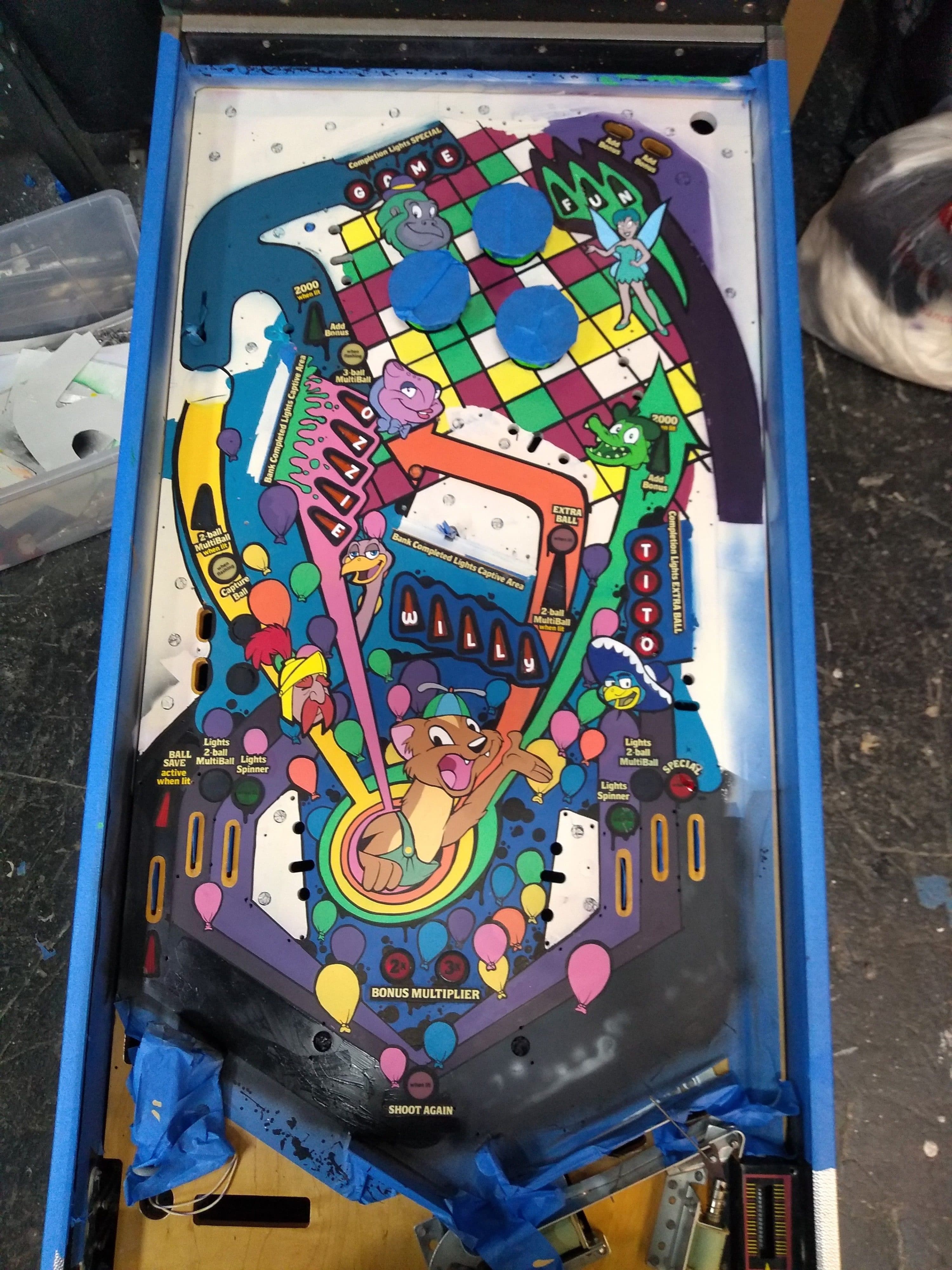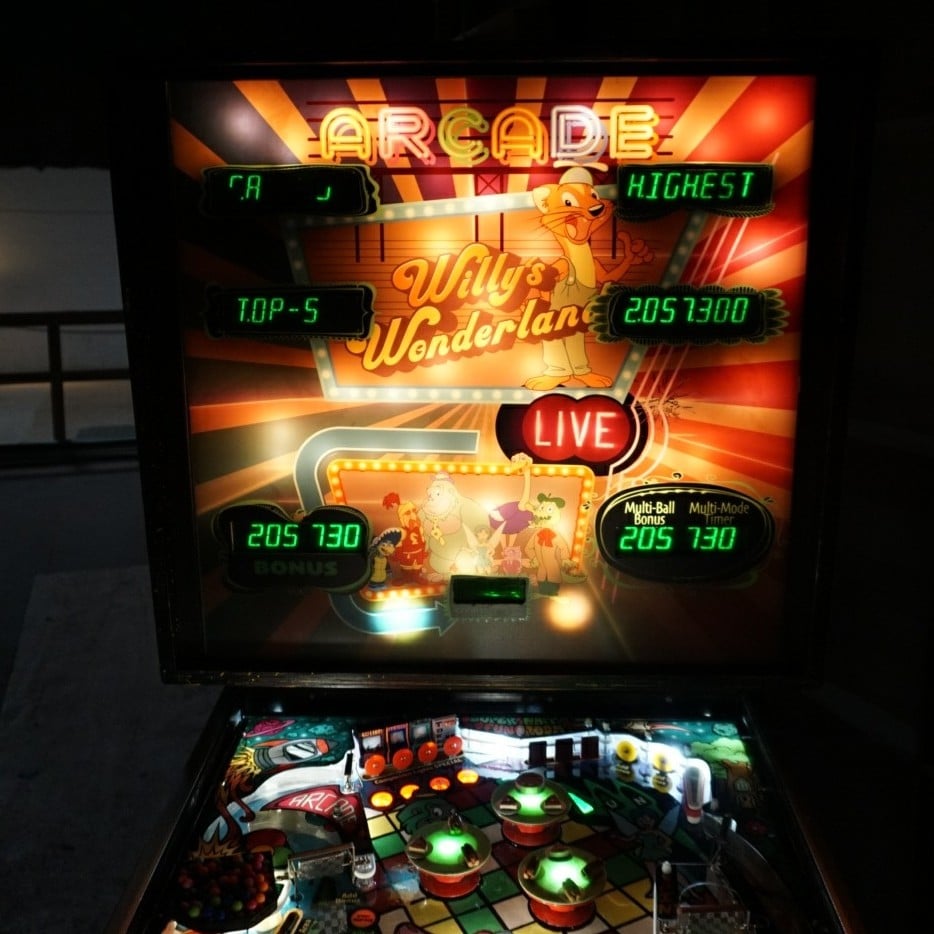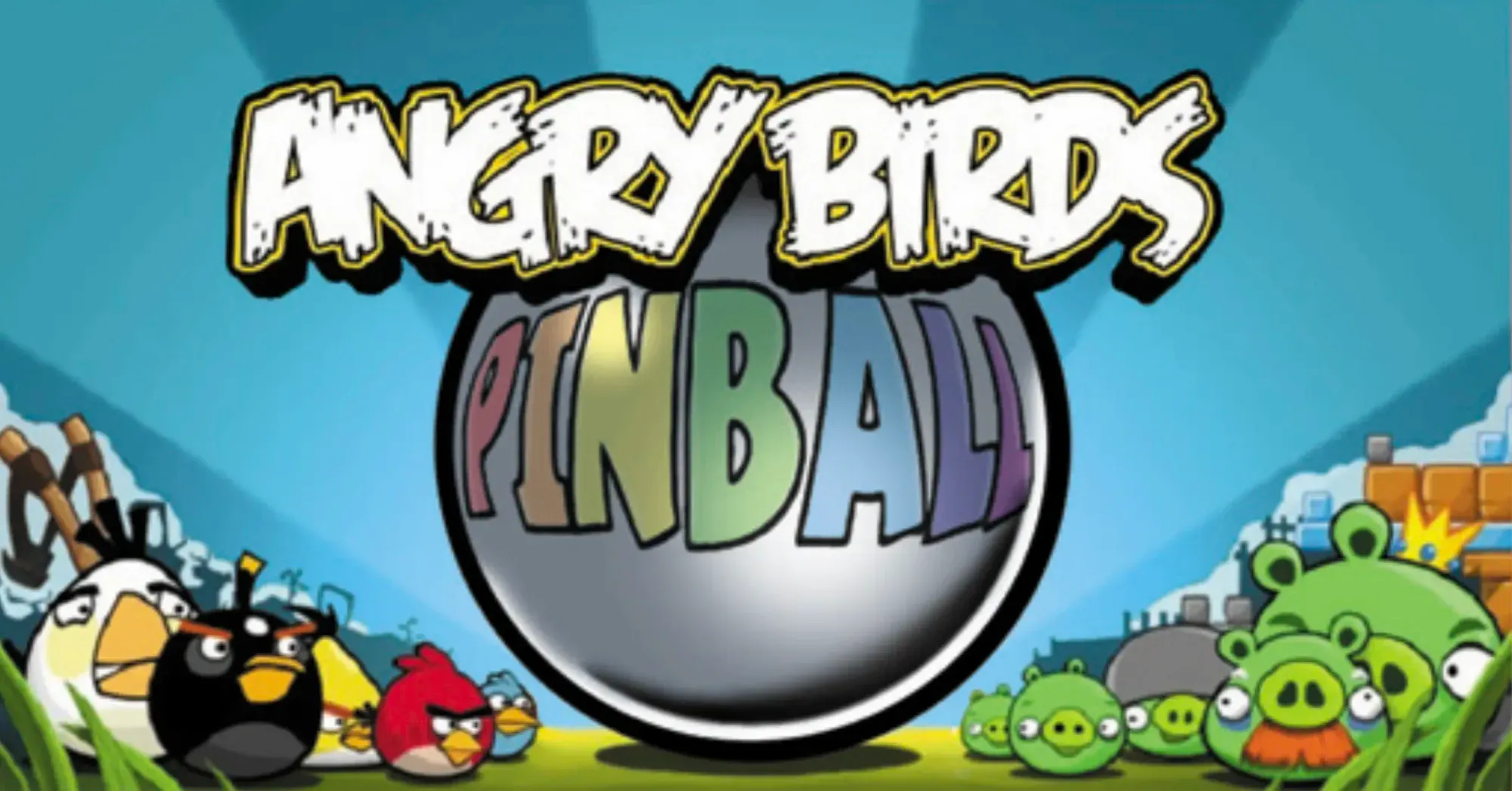The Making of Willy’s Wonderland Pinball

Image Gallery
I should probably begin by introducing myself. I have worked in the film and animatronics industry mostly as a puppet and specialty prop builder for the past 15 years. My interest in pinball machines was really piqued when The Pinball Arcade released in 2012. It rekindled my love of pinball machines which I hadn’t laid hands on since I was a kid. By the time I was in my 20s arcades practically didn’t exist in Georgia. I bought a beat up Terminator 2 and immediately began obsessing over refurbishing. I removed the playfield and did some touch ups where the ball had scuffed into the paint. The fact that these touch ups had to be done by hand really planted a seed in my mind. Why couldn’t I just do an entire playfield with my own art? Why couldn’t a pinball machine be done as a one off, playable painting?
Several years later I bought a Demolition Man pinball to start my own total conversion project. I am still working on it to this day but haven’t shared much of the process online. A person who had seen the project though was Molly Coffee, a production designer that I work with often. She contacted me about a film she was working on involving a man trapped inside a themed restaurant who battles animatronics. The script involved him playing an arcade game and the idea of a pinball machine was brought up.
We agreed to a price point and I started work on finding a table. The machine needed to be retro and I began looking for alphanumeric table. I started getting assets from the film to consider as sets were being built. Willy’s Wonderland is a bit like Showbiz Pizza but they sell hot dogs. It has a ball pit, an arcade, a “fairy forest”, and a special party room for birthdays. I wanted to find a table that could feel like you are inside of the restaurant. Different areas of the machine could represent these different sections. I settled on a 1982 Devil’s Dare that had recently been shopped and clear coated and started sending ideas to the filmmakers. Here are some initial ideas:

Using the techniques I’ve learned from restorations I got to work right away. I only had about 3 weeks from acquisition to finished table to get the project done so I decided to not do a full playfield pull. I was going to depopulate the upper playfield, mask everything off, do a light sand, paint, and clear coat everything right there in the cab. One of the benefits of Devils dare were the generic pinball instructions all over the playfield. I cut specific shapes of masking tape for those texts and all of the inserts and primed the whole surface with white to give myself a canvass.

I then traced all of the playfield plastics onto white poster board to make plastic illustrations. All of the plastics were drawn at scale, inked with black, scanned, then colored on the computer. They then get reverse printed on clear sticker paper and adhered to a new piece of cut petg plastic. Working this way I was able to slightly change the shape of the plastics and make some areas clear the were blocked before. I decided on a birthday balloon theme for most of the lower playfield and made the slingshots and upper kickers have a “popping” balloon to push the ball away.


The playfield paint was done by making stencils to block out large areas and airbrushing in color. I then outlined parts with Montana black acrylic paint markers of varying sizes.




And eventually everything was ready for a few cans of SprayMax2k and a repopulated playfield:

The cab was also done with stenciled spray paint:

The backglass was designed and printed by Molly Coffee:

I didn’t even have time to let the clear coat cure before putting it all back together which I’m sure will horrify some restorers out there. If you’ve ever worked in my business though you are used to entire set pieces being delivered with sticky paint! Here are some final photos:



In the end, the final product of this machine winds up being a collaboration between the production designer, myself, and Frank Gabriel; the illustrator of the cartoons. Pulling together a bunch of assets to try and create a greater whole was an absolute treat for me. I’ve always considered pinball machines a fascinating canvass to work on, and one that very few artists get a chance at. I would certainly do it again given the chance.
To answer a few common questions:
- I did get to meet Nicholas Cage as I did a couple days on set watching after the machine. He mentioned that he used to own a Gorgar. I told him I almost bought a Gorgar to do this project! He was as entertaining as you would imagine during takes of the dancing and pinball playing sequences.
- Interestingly enough the script for Willy’s Wonderland was written ten years ago and pre-dates the Five Nights at Freddy’s games by several years. I think a movie like this already exists in the popular imagination and would probably be made eventually. It just happens in this case that the video game came first.
- Im not sure who actually owns the table now but my guess would a be a producer of the film. I did try to negotiate a lower rate to be able to keep the table but they didn’t take the bait!
- The machine is not for sale as far as I know and I have literally no idea where it is currently.
- We didn’t change any other assets besides the physical table. The sounds you hear in the movie were added in post.
If you’re interested in seeing more from this project you can follow me @critterlabs on Instagram. Thanks for reading!










